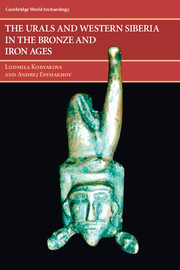Book contents
- Frontmatter
- Contents
- List of Plates, Figures, and Tables
- Foreword, by Philip L. Kohl
- Preface
- Introduction
- PART ONE THE BRONZE AGE: THE RISE OF ECONOMIC AND CULTURAL COMPLEXITY
- 1 The Development of Bronze Metallurgy
- 2 The Achievements and Collisions of the Early and Middle Bronze Age
- 3 Stabilization, Colonization, and Expansion in the Late Bronze Age
- 4 On the Eve of a New Epoch: Final Bronze Age
- PART TWO THE IRON AGE – FORMING EURASIAN INTERACTIONS
- Notes
- References
- Index
3 - Stabilization, Colonization, and Expansion in the Late Bronze Age
from PART ONE - THE BRONZE AGE: THE RISE OF ECONOMIC AND CULTURAL COMPLEXITY
Published online by Cambridge University Press: 03 February 2010
- Frontmatter
- Contents
- List of Plates, Figures, and Tables
- Foreword, by Philip L. Kohl
- Preface
- Introduction
- PART ONE THE BRONZE AGE: THE RISE OF ECONOMIC AND CULTURAL COMPLEXITY
- 1 The Development of Bronze Metallurgy
- 2 The Achievements and Collisions of the Early and Middle Bronze Age
- 3 Stabilization, Colonization, and Expansion in the Late Bronze Age
- 4 On the Eve of a New Epoch: Final Bronze Age
- PART TWO THE IRON AGE – FORMING EURASIAN INTERACTIONS
- Notes
- References
- Index
Summary
In the Late Bronze Age, the steppe, the forest-steppe, and the Ural region became an arena of interaction between the two biggest cultural formations – Srubnaya and Andronovo. These cultural systems, occupying the Eurasian steppe and forest-steppe are represented by a great number of sites: settlements of different sizes consisting of many dwellings and burial grounds manifesting a great diversity of mortuary practices. The most characteristic trait of these groups is the pottery, represented by several types and differing in decoration and form.
THE URALIAN VARIANT OF THE SRUBNAYA FAMILY OF CULTURES
The Srubnaya culture was first distinguished by Gorodstov (1916) on statistically processed materials of the Donets area. The culture was named for the burials that were found inside wooden structures placed into the funeral chamber. Only later did it become apparent that such structures in fact occurred rarely: about 2 percent of the total number of burials. As with other cultures that were widely dispersed, the name of the burials became the name of the cultural and historical intercommunity (Merpert 1985).
Several basic features are characteristic of this culture: the vast territory that it covers; an abundant number of sites, some already studied and others continually being discovered; and the striking uniformity of its material. However, the total number of Srubnaya sites is not even calculated. Thousands of settlements, concentrated mainly in the forest-steppe region, and hundreds of kurgan burials with thousands of excavated burials have been recorded up.
- Type
- Chapter
- Information
- The Urals and Western Siberia in the Bronze and Iron Ages , pp. 111 - 160Publisher: Cambridge University PressPrint publication year: 2007



